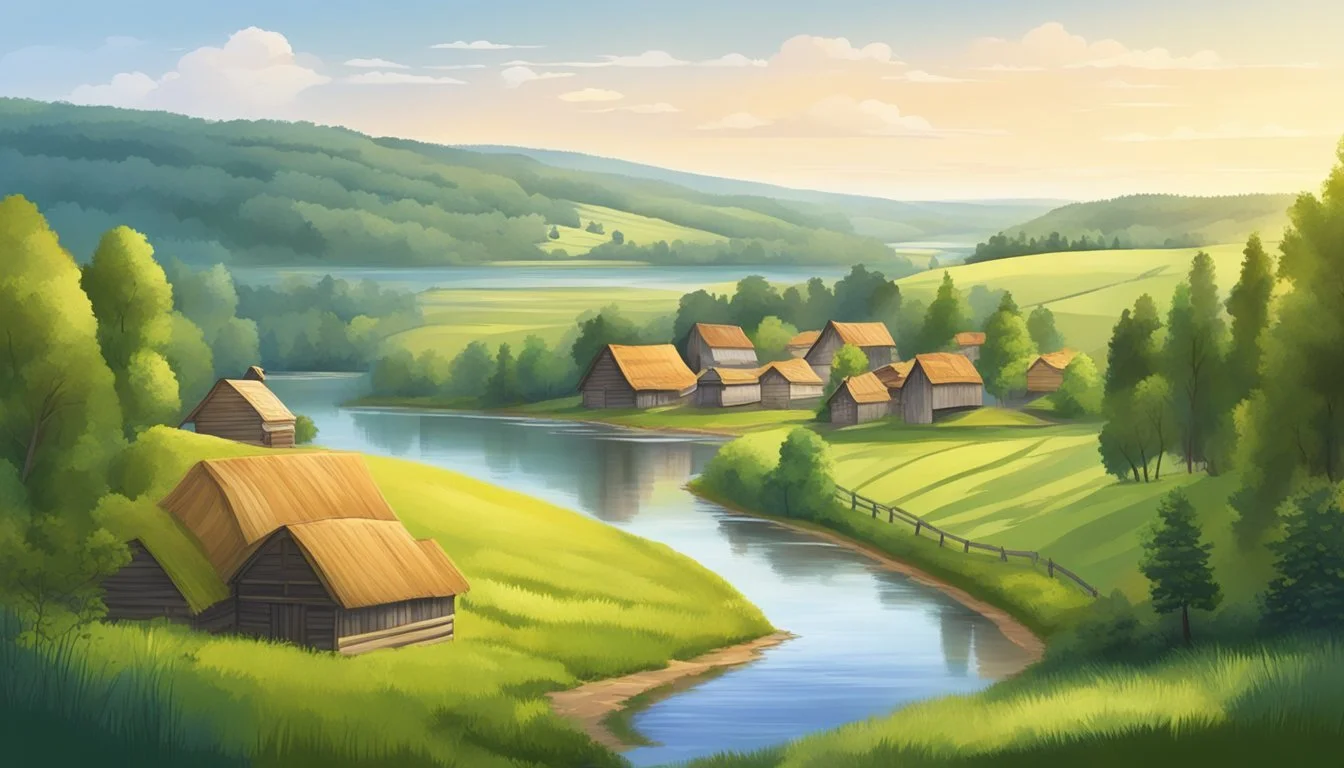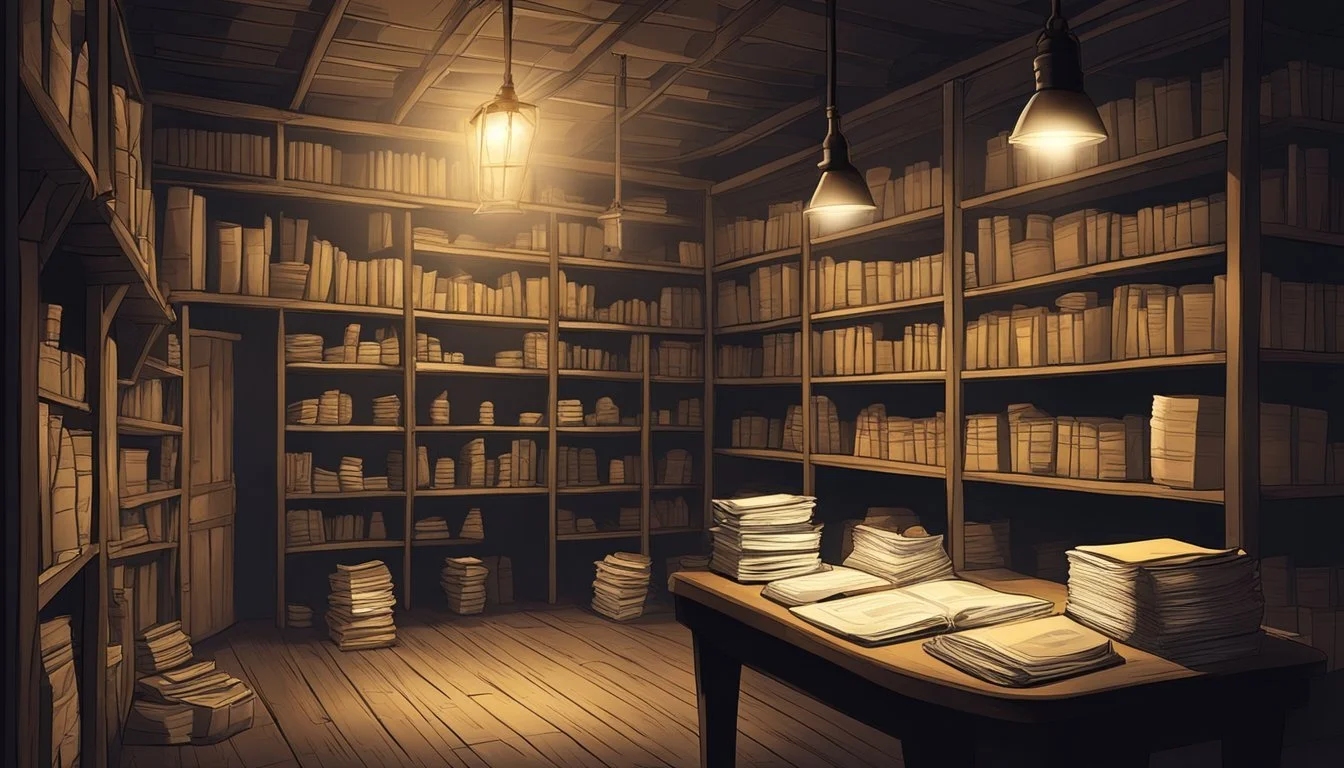7 Compelling Documentaries on Lithuania
Unveiling Baltic History and Culture
Lithuania, a country rich in history and culture, has been the subject of numerous compelling documentaries. These films offer viewers a unique window into the Baltic nation's past, present, and future, exploring its landscapes, people, and traditions.
Documentaries about Lithuania provide valuable insights into the country's journey from Soviet occupation to independence and its modern transformation. From historical examinations to contemporary cultural explorations, these films capture the essence of Lithuanian identity and its place in the world. The following selection of documentaries highlights some of the most engaging and informative works that shed light on this fascinating Baltic nation.
1) The Other Dream Team
"The Other Dream Team" is a documentary film directed by Marius A. Markevičius. It chronicles the remarkable journey of the 1992 Lithuania national basketball team to the Barcelona Olympics.
The film explores the team's struggle under Soviet rule and their emergence as symbols of Lithuania's independence movement. It highlights how basketball became intertwined with the country's quest for freedom.
A unique aspect of the story is the unexpected support the team received from the Grateful Dead. The American rock band helped fund the team's Olympic journey and provided them with tie-dyed uniforms.
The documentary captures the team's triumphant performance at the 1992 Summer Olympics, where they won the bronze medal. This victory held deep symbolic meaning for the newly independent nation of Lithuania.
Through interviews and historical footage, the film provides insight into the players' experiences and the broader context of Lithuania's transition from Soviet control to independence. It showcases how sports can transcend boundaries and become a powerful expression of national identity.
2) Game of the Nation
"The Other Dream Team" is a captivating documentary that explores Lithuania's passion for basketball. The film traces the sport's roots in Lithuanian culture, dating back to the 1930s when the country first embraced the game.
The documentary highlights how basketball became a symbol of national identity and resistance during Soviet occupation. It showcases the journey of Lithuanian players who were forced to compete for the USSR national team, despite their desire for independence.
At the heart of the film is the story of the 1992 Lithuanian Olympic basketball team. After regaining independence, Lithuania faced financial struggles to send a team to the Barcelona Olympics. The documentary reveals how the Grateful Dead stepped in to sponsor the team, providing funding and colorful tie-dye uniforms.
The film interweaves Lithuania's fight for freedom with its basketball journey. It features interviews with key players like Arvydas Sabonis and Sarunas Marciulionis, who share their experiences and the significance of representing their newly independent nation.
"The Other Dream Team" offers a unique perspective on how sports can embody a nation's spirit and aspirations. It showcases basketball as more than just a game, but as a powerful expression of Lithuanian identity and independence.
3) Masterpieces of Lithuanian Documentary
Lithuanian documentary filmmaking has produced several notable works that have garnered international acclaim. "The Jump" (2020), directed by Giedrė Žickytė, stands out as a prime example of Lithuanian documentary excellence.
"Mariupol 2" (2022) by Mantas Kvedaravičius and "Mr. Landsbergis" (2021) by Sergei Loznitsa have both been shortlisted for the European Film Awards, showcasing the caliber of recent Lithuanian documentaries.
Many Lithuanian documentaries explore historical themes, often focusing on periods of occupation and resistance. These films provide insights into the country's rich and complex past.
"Irklais per Atlanta" (2024) chronicles a Lithuanian's solo rowing journey across the Atlantic Ocean, commemorating a historic flight attempt from 90 years prior. This documentary captures the spirit of adventure and perseverance inherent in Lithuanian culture.
These films demonstrate the strength of Lithuanian documentary filmmaking, offering compelling narratives and unique perspectives on both historical events and contemporary challenges.
4) Lithuania Through the Lens
"Lithuania Through the Lens" is a captivating documentary that offers viewers a unique perspective on this Baltic nation. The film showcases Lithuania's diverse landscapes, from its pristine forests to its picturesque coastal regions.
The documentary explores Lithuania's rich cultural heritage, featuring traditional festivals, architecture, and art. It highlights the country's historical landmarks, including medieval castles and baroque churches, providing insight into Lithuania's complex past.
Interviews with local residents offer personal stories and reflections on Lithuanian identity. The film captures the daily lives of people in both rural villages and urban centers, presenting a well-rounded view of contemporary Lithuanian society.
"Lithuania Through the Lens" also examines the country's natural beauty, showcasing its national parks and wildlife. The changing seasons are beautifully depicted, revealing Lithuania's charm throughout the year.
This visually stunning documentary serves as an excellent introduction to Lithuania for those unfamiliar with the country. It presents a balanced portrayal of Lithuania's strengths and challenges, offering viewers a comprehensive look at this often-overlooked European nation.
5) The Invisible Front
The Invisible Front documents Lithuania's resistance against Soviet occupation after World War II. This compelling film explores the struggle of Lithuanian partisans who fought against communist rule in the countryside.
The documentary features testimonials from survivors on both sides of the conflict, providing a balanced perspective on this lesser-known chapter of history. It sheds light on the personal stories of those involved in the resistance movement.
At the heart of the narrative is the love story between Juozas Lukša and Nijolė Bražėnaitė. Their tale intertwines with the broader struggle, adding a human element to the historical events.
The film skillfully portrays the cat-and-mouse game between Lithuanian resistance fighters and Soviet forces. It illustrates the high cost of this conflict, with many lives lost in the pursuit of freedom.
Through its powerful storytelling, The Invisible Front brings attention to a significant period in Lithuanian history. It offers viewers insight into the determination and sacrifice of those who fought against Soviet occupation.
6) How We Played the Revolution
"How We Played the Revolution" is a documentary that explores the remarkable story of Antis, a Lithuanian rock band formed in 1984. The film showcases how this group of architects turned musicians inadvertently sparked a movement that contributed to Lithuania's independence from the Soviet Union.
Set against the backdrop of intense economic and social unrest in the Baltic state, the documentary reveals how Antis began as a New Year's party joke in Kaunas. Their intellectual and satirical performances quickly gained popularity, spreading by word of mouth across Lithuania.
The film illustrates how Antis's music became a powerful form of expression and resistance during a time of political oppression. Their concerts evolved into massive events known as Rock Marches, drawing thousands of participants.
Through a blend of archival footage and interviews, the documentary captures the spirit of defiance and counterculture that Antis embodied. It demonstrates how their music resonated with the Lithuanian people's desire for freedom and self-determination.
"How We Played the Revolution" offers a unique perspective on Lithuania's path to independence, highlighting the unexpected role of rock music in challenging Soviet authority and uniting people in their quest for liberty.
7) Light in the Dellar
"Light in the Cellar" is a poignant documentary that explores Lithuania's underground printing press during the Soviet era. The film showcases the courageous efforts of Lithuanian dissidents who risked their lives to preserve their language and culture.
Director Agnė Marcinkevičiūtė skillfully weaves together archival footage and interviews with former resistance members. These firsthand accounts provide a vivid portrayal of the clandestine operations that took place in hidden cellars and basements across the country.
The documentary highlights the ingenious methods used to print and distribute banned Lithuanian literature and news. It reveals the intricate network of secret locations and code words that allowed this underground movement to flourish despite constant surveillance.
"Light in the Cellar" also examines the lasting impact of these efforts on Lithuanian identity and independence. The film serves as a testament to the power of the written word and the indomitable spirit of those who fought to keep their culture alive.
Through its compelling narrative, the documentary sheds light on a lesser-known aspect of Lithuania's struggle for freedom. It stands as a powerful reminder of the sacrifices made to preserve national heritage in the face of oppression.
Historical Context of Lithuanian Documentaries
Lithuanian documentary filmmaking has deep roots in the country's complex history and cultural evolution. The genre has played a vital role in capturing and preserving Lithuania's past while reflecting its present.
Evolution of Documentary Filmmaking in Lithuania
Documentary filmmaking in Lithuania emerged in the early 20th century, gaining momentum after World War II. Under Soviet rule, documentaries primarily served as propaganda tools. The 1960s saw a shift towards more artistic and experimental approaches.
Following independence in 1990, Lithuanian documentaries experienced a renaissance. Filmmakers embraced new styles and technologies, exploring previously taboo subjects. The 2000s brought increased funding and international recognition, leading to a surge in production and quality.
Influence of Lithuanian History on Documentaries
Lithuania's tumultuous history heavily influences its documentaries. Films often explore themes of national identity, Soviet occupation, and the struggle for independence. Many documentaries focus on preserving cultural heritage and traditional ways of life.
Filmmakers frequently address the trauma of World War II, deportations, and resistance movements. Post-independence documentaries examine the challenges of transition and integration into the European Union. Recent works tackle contemporary issues like emigration and social change, reflecting Lithuania's ongoing evolution.
Themes Explored in Lithuanian Documentaries
Lithuanian documentaries delve into the nation's rich cultural heritage and tackle pressing social and political issues. Filmmakers use their craft to examine Lithuania's identity and confront challenges facing society.
Cultural Identity and Heritage
Lithuanian documentaries often explore the country's cultural roots and traditions. Films showcase folk customs, traditional crafts, and rural life to preserve and celebrate national heritage. Some documentaries focus on Lithuania's pagan past and its transition to Christianity. Others examine the impact of Soviet occupation on Lithuanian culture and identity.
Filmmakers also highlight Lithuanian art, music, and literature. Documentaries profile notable Lithuanian creators and their contributions to cultural expression. The unique Lithuanian language receives attention in films exploring its history and efforts to preserve it.
Social and Political Issues
Many Lithuanian documentaries address contemporary social and political topics. Filmmakers examine the challenges of post-Soviet transition and Lithuania's integration into the European Union. Some films explore issues like emigration, demographic changes, and economic inequality.
Documentaries tackle sensitive subjects such as corruption, human rights, and historical justice. Films about Lithuania's resistance to Soviet rule and the struggle for independence remain popular. Environmental issues, including threats to the Baltic Sea, feature in some productions.
Recent documentaries have addressed LGBTQ+ rights, women's issues, and changing social norms in Lithuania. Filmmakers also explore the impact of technology and globalization on Lithuanian society and culture.
Cinematic Techniques in Lithuanian Documentaries
Lithuanian documentaries employ distinctive narrative approaches and visual methods to portray their subjects. Filmmakers utilize innovative storytelling techniques and striking imagery to create compelling works.
Narrative Styles
Lithuanian documentary directors often blend poetic and observational styles. They frequently use minimal narration, allowing subjects and scenes to speak for themselves. Some films incorporate archival footage to provide historical context.
Many documentaries feature non-linear structures, weaving together past and present. Directors may employ intimate interviews alongside wider societal perspectives. Personal stories are often used to illuminate broader themes.
Lithuanian filmmakers sometimes blur the lines between fiction and reality. They might stage scenes or use actors to recreate events, challenging traditional documentary conventions.
Visual Storytelling
Lithuanian documentaries are known for their striking cinematography. Directors frequently use long, contemplative shots to immerse viewers in specific environments. Natural lighting is often preferred to create an authentic atmosphere.
Filmmakers employ creative framing techniques to convey meaning. Close-ups of faces and hands are used to capture emotional nuances. Wide landscape shots often serve as visual metaphors for broader themes.
Many documentaries incorporate experimental visual elements. Time-lapse photography, slow motion, and unconventional angles add artistic flair. Some directors use animation or graphics to illustrate abstract concepts or historical events.



